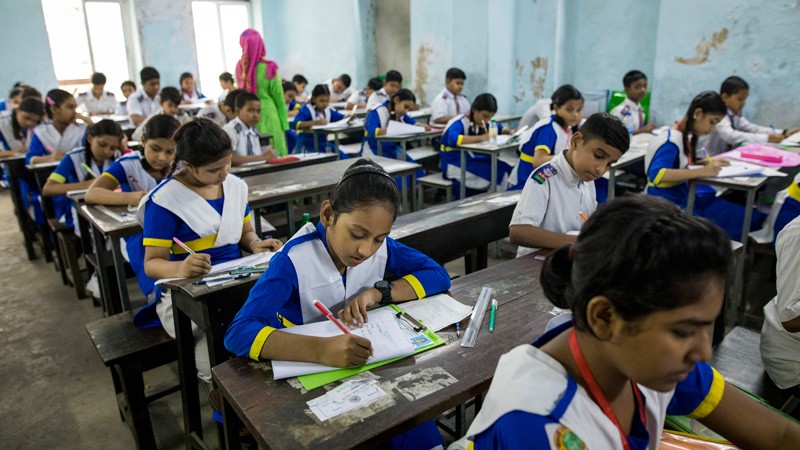每日外闻85
追踪全球教育中的不平等
已经开发出工具来预测到2030年世界各地教育的不平等。它们表明,总体不平等程度将下降,但世界所有地区都无法实现普及中学教育。
受教育年限的延长与健康和生存状况的改善、人口增长的放缓和经济的增长都有关系。由于其重要性,获得包容和公平的优质教育被列入2015年联合国大会批准的可持续发展目标之一。可持续发展目标是计划到2030年实现的一套雄心勃勃的国际发展目标。弗里德曼等人在《自然》(Nature)杂志上撰文指出,尽管大多数国家预计到2030年将实现近乎普及的初等教育,但中学毕业率巨大的地区间差异将持续存在。
该文的作者着手评估各国是否有望在2030年前实现教育的可持续发展目标。他们收集了来自195个国家和地区的3180个具有全国代表性的人口普查和调查数据库。这个数据库是对以前监测教育工作的改进,以前的监测工作要么依赖于单一时间点的反投影数据,要么依赖于来自五分之一数据源派生的数据库。弗里德曼等人开发了一个模型,该模型将数据集中的所有数据源结合起来,并根据1970年至2018年期间所有人口的受教育程度(分别按性别和国家)来推断。然后,该模型利用这些信息来预测个别国家或地区、以及作者选择的七个主要世界地区(包括高收入国家、撒哈拉以南非洲、东欧和中亚)未来的教育普及趋势。
Tracking inequalities in education around the globe
Tools have been developed to project inequalities in education around the world to 2030. They reveal that overall inequality will decline, but that all world regions will fall short of achieving universal secondary education.
Increased years of schooling have been linked to better health and survival, slower population growth and greater economic growth. Because of its importance, access to “inclusive and equitable quality education” was included as one of the Sustainable Development Goals (SDGs) ratified by the United Nations General Assembly in 2015 (see go.nature.com/3ana8ob). The SDGs are an ambitious set of international development targets to be achieved by 2030. Writing in Nature, Friedman et al. provide evidence that, although most nations are projected to achieve near-universal primary education by 2030, large inter-regional disparities in the rates of secondary-school completion will persist.
The authors set out to assess whether countries are on track to achieve the SDGs for education by 2030. They assembled a database of 3,180 nationally representative censuses and surveys from 195 nations and territories. This database is an improvement on previous efforts to monitor education, which relied either on data back-projected from a single time point5 or on a database derived from one-fifth as many data sources6. Friedman et al. developed a model that combines all the data sources in their data set and extrapolates single-year estimates of educational attainment for all populations, separately by sex and country, from 1970 to 2018. The model then uses this information to project future trends in educational attainment for individual countries or territories, and for seven ‘major world regions’ chosen by the authors, which include high-income countries, sub-Saharan Africa and Eastern Europe and central Asia.
See you tomorrow











